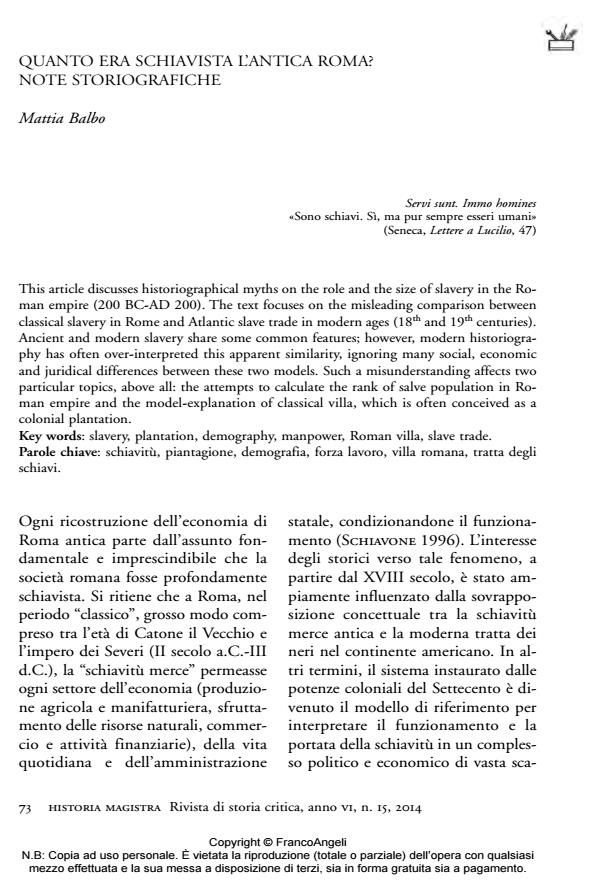Quanto era schiavista l’antica Roma? Note storiografiche
Journal title HISTORIA MAGISTRA
Author/s Mattia Balbo
Publishing Year 2015 Issue 2014/15
Language Italian Pages 5 P. 73-77 File size 78 KB
DOI 10.3280/HM2014-015007
DOI is like a bar code for intellectual property: to have more infomation
click here
Below, you can see the article first page
If you want to buy this article in PDF format, you can do it, following the instructions to buy download credits

FrancoAngeli is member of Publishers International Linking Association, Inc (PILA), a not-for-profit association which run the CrossRef service enabling links to and from online scholarly content.
This article discusses historiographical myths on the role and the size of slavery in the Roman empire (200 BC-AD 200). The text focuses on the misleading comparison between classical slavery in Rome and Atlantic slave trade in modern ages (18th and 19th centuries). Ancient and modern slavery share some common features; however, modern historiography has often over-interpreted this apparent similarity, ignoring many social, economic and juridical differences between these two models. Such a misunderstanding affects two particular topics, above all: the attempts to calculate the rank of salve population in Roman empire and the model-explanation of classical villa, which is often conceived as a colonial plantation.
Keywords: Slavery, plantation, demography, manpower, Roman villa, slave trade.
Mattia Balbo, Quanto era schiavista l’antica Roma? Note storiografiche in "HISTORIA MAGISTRA" 15/2014, pp 73-77, DOI: 10.3280/HM2014-015007